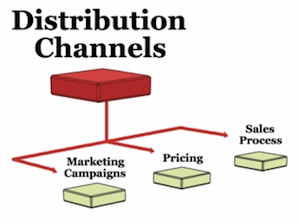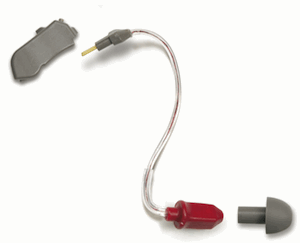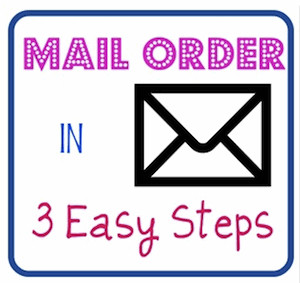 This week is a continuation of the discussion of the past two weeks – on hearing aid distribution systems. Last week’s post focused on distribution systems related to contract services, purchasing groups, big box retailers, pharmacies, and health care companies. This week, additional distribution systems that have been tried are discussed.
This week is a continuation of the discussion of the past two weeks – on hearing aid distribution systems. Last week’s post focused on distribution systems related to contract services, purchasing groups, big box retailers, pharmacies, and health care companies. This week, additional distribution systems that have been tried are discussed.
Lens Crafters (1987)
Hearing Care 2000 was a division of Precision Lens Crafters. For the first time, a patient could have their hearing evaluated, and then the hearing aid fabricated and fitted in one place, during one visit. An on-site laboratory made possible the fabrication of the hearing aid during the first visit, and primarily referred to custom-molded products. Just as Lens Crafters advertised one-hour eyeglass fitting, the intent was to allow the patient to leave after a single session with a custom-molded hearing aid. Their promise was to “…custom fit you with the best possible hearing aid….and we will do it in one visit.” The hearing aid would be made while the patient watched. This was during a time when custom-molded hearing aids dominated hearing aid sales. 
SeboTek (2003)
The SeboTek PAC™ (Post-Auricular-Canal) hearing aid was introduced at the AAA (American Academy of Audiology) meeting in 2003, and the hearing aid industry was forever changed – changed with an impact that rivaled that of digital hearing aids. It was the first successful same-session fit hearing aid. This development sparked a monumental reversal in hearing aid design, sales, and use – from custom-molded in-ear/canal variations, to essentially invisible BTE (behind-the-ear) configurations. Even more significant, it helped bring an untold number of new hearing aid users into the market. The invention was responsible also for improving patient satisfaction of existing hearing aid wearers, bringing many back to hearing aid offices for this “new and better” design. But, while it changed the hearing aid industry relative to fittings, it did not change the traditional distribution systems already in place, even though it could have done this easily. 
MAIL ORDER HEARING AID SALES
Lloyds of Rockford, Illinois has been selling hearing aids via mail order for 45 years, and now sells them via ![]() the web as well. Hearing Help Express of DeKalb, IL started selling hearing aids via mail order 31 years ago. Currently, mail-order hearing aids are synonymous with Internet hearing aid sales, because those former mail-order companies have followed marketing trends and now offer the option of online purchasing. Surfing the web will identify many similar hearing aid sales operations today.
the web as well. Hearing Help Express of DeKalb, IL started selling hearing aids via mail order 31 years ago. Currently, mail-order hearing aids are synonymous with Internet hearing aid sales, because those former mail-order companies have followed marketing trends and now offer the option of online purchasing. Surfing the web will identify many similar hearing aid sales operations today.
Attempts have been made to ban mail-order hearing aid sales. Some states passed laws prohibiting OTC (over-the-counter) and mail-order sales without a dispensing license, indicating that it is within the power of the state to pass such rules as a public safety and welfare issue.1
However, such state laws were contested in the 2006 case Missouri Board of Examiners for Hearing Instruments Specialists v. Hearing Help Express, an out-of-state mail order/Internet hearing aid seller. Hearing Help Express asked the 8th Circuit Court of Appeals to review a lower federal district court decision that had stopped Hearing Help Express from selling hearing aids to the residents of Missouri without prior audiologic testing or fitting as required by state law.2
On review of the lower court’s decision, the US Court of Appeals for the 8th Circuit reversed the district court’s ruling. According to Liang et al.,3 the 8th Circuit Court of Appeals held that the Missouri state law was invalid because it was preempted by the federal Medical Devices Amendment (MDA) to the Food, Drug, & Cosmetics Act, 21 U.S.C. The MDA states that No State… may establish…any requirement (1) which is different from, or in addition to, any requirement applicable under this chapter to the device, and (2) which relates to the safety or effectiveness of the device or to any other matter included in a requirement applicable to the device under this chapter. Under federal law, an adult patient who wishes to purchase a hearing aid must either undergo an auditory evaluation or execute a signed waiver prior to being allowed to purchase a hearing aid. This can be interpreted that under federal law, an auditory examination is optional prior to hearing aid purchase. Overall, the Missouri law was considered to be in direct conflict with the federal regulations, hence unenforceable.
Essentially, the Court held that adult patients may purchase hearing aids OTC (over-the-counter) in retail stores, online or through mail order with a signed waiver and without an audiologic fitting or testing. (The latter requirements are not necessary for the sale of PSAPs).
STARTER HEARING AIDS
Low-cost “starter” hearing aids have been introduced through traditional hearing aid distribution channels to compete with OTC, mail order, and Internet sales of hearing products that are sold directly to the consumer. Dispensers somewhat grudgingly accept that not everyone is willing to make a hearing aid purchase with a capital “C” (commitment of dollars), especially when they are hesitant to accept that they have a hearing loss that is severe enough to require amplification. The more marginal the hearing loss, the less likely it is that a person will be willing to make a hearing aid “Commitment,” especially when substantial dollars are involved. This issue is as old as hearing aids. For the most part, the major hearing aid manufacturers have all had something in their product line that has been offered as an “introductory” product to help address this issue, but the price has not been as low as what some non-traditional and traditional distribution channels of hearing products have offered.
Songbird (2000)
The first systematic approach to quality, low-cost hearing aids was addressed by Songbird in 2000, with a disposable hearing aid. However, the original Songbird failed due to dispenser non-interest. Some dispensers have opined that it failed because it was an inferior product, a common argument against most low-cost hearing aids. However, when the Songbird was compared with the  leading programmable digital hearing aids at the time, the Songbird performed technically as well, or better than the premium-priced hearing aids – and even more so in its ability to reduce circuit noise.4,5
leading programmable digital hearing aids at the time, the Songbird performed technically as well, or better than the premium-priced hearing aids – and even more so in its ability to reduce circuit noise.4,5
Two reasons that the product was not the success hoped for were: 1) dispensers were unwilling to sell a product that cost the consumer $39.00, substantially depressing gross profit margins, and 2) the instrument did not fit as many ears cosmetically as had been projected due to its fixed design. With today’s sized components, the latter would have been essentially eliminated. What the Songbird showed, however, was that a quality hearing aid could be produced consistently for a low cost.
Does this mean that all low-cost hearing aids (or devices that appear to be hearing aids) are high quality? The answer is no. Some have limited adjustability, marginal circuitry, and some utilize cast-off components and dies of older hearing aids. The primary consideration related to quality of these units would seem to be related to the manufacturer making the product.
For the most part, “starter” hearing aids have not introduced new distribution channels. Traditional sellers of hearing aids offer these as affordable hearing aids to compete with OTC, mail order, and Internet sale of products that are sold direct to the consumer. Prices to the consumer range from about $500 to $900.
Confusing the issue of “starter” hearing aids is that many share the same performance characteristics with some of the better PSAPs (personal sound amplification products – to be discussed in a later presentation, and which have introduced new channels of distribution of products designed to assist hearing).
Next week the topic of hearing aid distribution systems will feature Internet sales, consumer hearing aid purchase based on audiogram/self test, and over-the-counter (OTC) sales.
References and Footnotes
1Goldsmith, M., Another voice…to hear: why it is OK to try retail or mail order hearing aids, June, 2011, ICOT Hearing Systems.
2Missouri Board of Examiners for Hearing Instrument Specialists v. Hearing Help Express, Inc. 447 F.3d 21 C.F.R. §801.421(a) (2006).
3Liang, B., Law, financial arrangements, and implications for audiology. Audiologyonline, February 2007.
4Moore, B.C.J., Stone, M.A., and Alcántara, J.I. Technical review of the Songbird™ Disposable Hearing Aid, Department of Experimental Psychology, University of Cambridge, Commissioned by Defeating Deafness, 2001.
5Brooks, D., Moore, B.C.J., and Taylor, R. Songbird disposable hearing aid – Panel Report commissioned by Boots Opticians, Ltd. 2001.






